Three off-the-top-of-my-head advantages to living in Arkansas: Chocolate gravy over biscuits is a breakfast option. You can absolutely wear your cut-offs to the fanciest restaurant in town. Wet-wading season runs April through October.
You may have never even heard of such a thing as chocolate gravy, but it’s real, and it is spectacular. Admittedly it’s a broad stroke, but if you’re not in the cut-offs crowd, well, we probably won’t have much in common. And around these parts, waders are for duck hunting.
I’m not a duck hunter. I am a devout warm-water fly angler who, in a sparkling example of reverse snobbery, shuns the legendary, yet, artificial trout fishery of the Ozarks. So, somewhat unsurprisingly, I’ve never owned a pair of waders. Wet-wading is the only wading I’ve ever known.
One of the more charming qualities of wet-wading is that you can do it on the cheap and with limited equipment. Outside of terminal tackle and rod and reel, any old pair of shorts (the aforementioned cutoffs included), a T-shirt (optional), and foot wear are all that’s required. The perfect footwear, though, has always been tough to find.
My earliest years of wet-wading found me slogging through the creeks barefoot. Not the best idea for myriad reasons, but I rarely went far and my feet were tougher back then. Later on, I wore my old sneakers (which, during my teen years, I’d outgrown and were usually about a half size too small) and carried that tradition into young adulthood. Sneakers were an OK option offering full-foot protection and a fairly comfortable, yet, waterlogged, hike back to the truck. But sneakers, not meant for the rigors of aquatic work, often simply disintegrated mid-summer as glue and bindings faltered under the stress of too much time in the water and too many harsh encounters with rocks.
Next up were the Tevas and Keen sandals, which offered a step-up in durability and comfort while still providing some protection for my dogs. The sandals, however, had gaps, and those gaps let sand and rocks in, and the sand and rocks played havoc with my now tender grown-up feet.
The quest for perfect wading kicks had me researching flats shoes and lighter models of wading boots. But my wet-wading ranges from Ozark streams full of slick rocks to brushy, narrow lowland creeks to foot-sucking, swampy backwaters, and the hike to a fro often measures in miles. I could never find the right combination of versatility and durability required for what I would throw at a wading shoe.
And then I found these — the Orvis PRO Approach wet wading shoe.
How to describe them? Imagine your favorite trail shoes tweaked for prolonged watery excursions.
What Works
Weight
One of the first things you’ll notice while handling the Orvis Pro Approach is the weight, or rather, lack of. My size 11s weigh in at 29.06 ounces as a pair, which puts them at 18 ounces heavier than my flip flops (another poor choice for wet wading, by the way), two ounces more than my favorite Teva sandals and two ounces less than my Columbia trail-running shoes.
Orvis says that “the strength and reduced weight come from seamless PU (polyurethane) cage technology.” Simply put, weight is a non-issue.
Comfort
The second thing you’ll notice is the flexibility of the shoe. The Pro Approach provides a rare balance of suppleness and security. A lightweight athletic shoe would be the best comparison. The previously mentioned PU cage gets credit for structural support. Comfort comes courtesy of a removable OrthoLite insole and a phylon midsole. Orvis says that this combo is the foundation for the shoes cushioned action and also contributes to enhanced “river feel.” I’m not sure what “river feel” is, but the shoe does provide a sense of connectedness to the terrain. I might attribute some of that to the insole and midsole, but the shoe’s flexibility is what allowed me to judge where my feet were in relation to rocks and drop-offs. Whatever the reason, there was a definite tactile tether to the creek bed and on the trail as well.
The shoe also drains quickly with no squishing within just a few steps out of the creek. Those removable insoles make total dry-outs much quicker as well.
Also, I’ve experienced zero hot spots so far — no irritation or blisters from rough stitching or poor design. The interior of the shoe is smooth and frictionless.

Traction
The Pro Approach might share tread technology with your truck tires as Michelin Outdoor Extreme rubber outsoles do the dirty work for the shoes. Orvis says that the Michelin rubber provides 43 percent better wet traction and and 25 percent higher abrasion resistance than the competition. There is, of course, no way to measure these claims in the real world. But I can say that secure footing was a problem on only the slickest of algae-coated shale in my local creek. Is there any shoe out there capable of slip-free performance on creek rocks? I doubt it, but the Pro Approach performed admirably.
On the trail, traction was surprisingly good, superb actually, for what I thought was just a “water shoe.”
Why-didn’t-I-think-of-thats
This shoe has three features that seem so innovative as to be considered genius. Number one is the integrated Ariaprene sock. I didn’t wade through any shin-deep decomposing piles of detritus, but I did bury the shoes in some silt. Minimal debris found its way into the shoe — a couple pieces of dead leaf and a few grains of sand were it. The sock did its job in keeping stuff out. Orvis says that the sock also offers support, which seems a dubious claim. There’s not enough rigidity in the sock for true ankle support, at least not for my slender ankles.
Numbers two and three — but just as impressive as the sock — is how Orvis handled the laces issue. Laces and cords are the biggest pain in the ass for wading shoes. Annoying at best and dangerous at worst, I can’t count the times that laces and cords have hung on sticks, logs, rocks, and my other foot leading to timeouts for reties or stumbles and, even given my cat-like reflexes, falls. Orvis handled this problem by largely protecting the laces and eyes within the shoe — there are only two external lace eyes. And with a neat little integrated lace pouch where the tongue, if the shoe had a tongue, would be. Tie your knot, tuck it up, and start fishing. Lace problems are a thing of the past.
Price
The Pro Approach lists for $149. That seems like a lot of coin compared to the old-sneaker option and even compared to other dedicated wet-wade shoe options. But the Pro Approach is more than a wet-wading shoe and, based on my research, you can’t buy another shoe with features like Orvis has incorporated into the Pro Approach for any price.
What Doesn’t
After three trips to the creek, I can’t find one thing to complain about.
Sizing
I’m a “tweener” wearing either a 10.5 or an 11 based on the shoe. The Pro Approach is available only in full sizes so I got 11s. The fit is nearly perfect without the need for any additional foot coverings. Based on this completely anecdotal evidence, I’d say the shoes run slightly to the smaller side, but if you wear an 11 you should order an 11.
Final Word
Impressed is an understatement. I had resigned myself to the fact that compromises must be made with any wet-wade shoe choice. I might have to give up comfort and weight for durability. And, in regards to some of the inherent problems associated with wet-wading — laces getting in the way and junk getting in my shoes — I had simply given up hope of ever finding a workable solution. Orvis proved that I was wrong on both counts and designed a shoe that seems to be custom made for folks like me.
The Orvis Pro Approach wet wading shoe is a winner across the board and highly recommended to anyone looking for do-it-all, amphibious footwear.




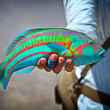







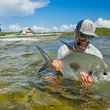




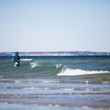



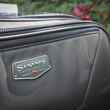
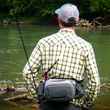



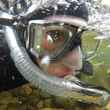
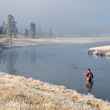

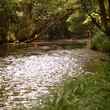
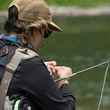
Comments
RK replied on Permalink
These look great. Do you know if they can take spikes for more grip?
Pages